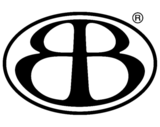Proud member of 1% for the Planet
Designed in Copenhagen. Made ethically for all on Earth.
Proud member of 1% for the Planet
Designed in Copenhagen. Made ethically for all on Earth.
Proud member of 1% for the Planet
Designed in Copenhagen. Made ethically for all on Earth.
Proud member of 1% for the Planet
Designed in Copenhagen. Made ethically for all on Earth.
Proud member of 1% for the Planet
Designed in Copenhagen. Made ethically for all on Earth.
Proud member of 1% for the Planet
Designed in Copenhagen. Made ethically for all on Earth.
Proud member of 1% for the Planet
Designed in Copenhagen. Made ethically for all on Earth.
Proud member of 1% for the Planet
Designed in Copenhagen. Made ethically for all on Earth.
Proud member of 1% for the Planet
Designed in Copenhagen. Made ethically for all on Earth.
Proud member of 1% for the Planet
Designed in Copenhagen. Made ethically for all on Earth.
Proud member of 1% for the Planet
Designed in Copenhagen. Made ethically for all on Earth.
Proud member of 1% for the Planet
Designed in Copenhagen. Made ethically for all on Earth.
Proud member of 1% for the Planet
Designed in Copenhagen. Made ethically for all on Earth.
Proud member of 1% for the Planet
Designed in Copenhagen. Made ethically for all on Earth.
Proud member of 1% for the Planet
Designed in Copenhagen. Made ethically for all on Earth.
Proud member of 1% for the Planet
Designed in Copenhagen. Made ethically for all on Earth.
Proud member of 1% for the Planet
Designed in Copenhagen. Made ethically for all on Earth.
Proud member of 1% for the Planet
Designed in Copenhagen. Made ethically for all on Earth.
Proud member of 1% for the Planet
Designed in Copenhagen. Made ethically for all on Earth.
Proud member of 1% for the Planet
Designed in Copenhagen. Made ethically for all on Earth.
Proud member of 1% for the Planet
Designed in Copenhagen. Made ethically for all on Earth.

Women's New Arrivals —You'll look good in these.
Men's New Arrivals —Your comfiest wardrobe starts here.
Core Play Trunks 9-Pack
Easy Boxer Shorts 6-Pack
Easy Boxer Shorts 6-Pack
Easy Boxer Shorts 2-Pack
Swimwear —Designed to mix, match, and layer
Women's Most Popular —The styles you love most
Men's Most Popular —Basics we all love.
True Crewneck Tee 3-Pack
Weekend Boxy Fit Crewneck Sweatshirt
Core Boxer Briefs 9-Pack
Just Dropped —New Activewear

Meet the makers Meet the people who make it all happen.

Join the OB Club Earn points while shopping, redeem for discounts & more.
In the Wild — See it IRL
Other tagged products
![Product image of Active Leggings]()
![Product image of Active Racer Back Bra]()
- SHOW MORESHOW LESS
Other tagged products
![Product image of Soft Knit Slim Cardigan]()
![Product image of Soft Knit Straight Leg Pants]()
- SHOW MORESHOW LESS




















































